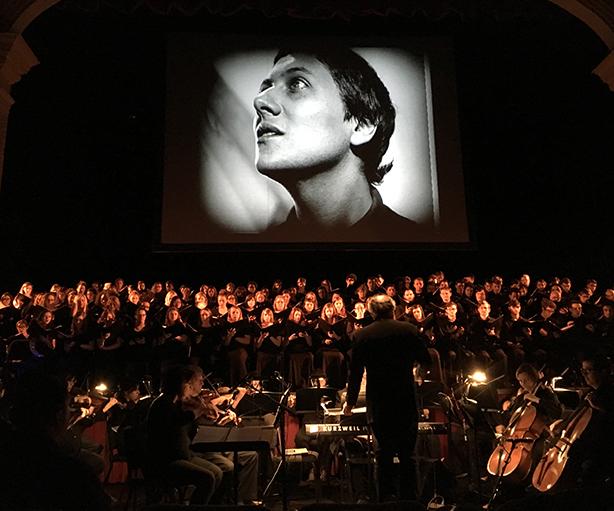Voices of Light: The Passion of Joan of Arc, was a silent movie screened during the 41 North Film Festival this past week. The film portrayed the trial and death of Joan while also providing an insight into the lives of the French and the religious at that time. The French were in the midst of a serious war and Joan believed that God had called her to bring victory and banish the English from France. This particular silent film was released all over the world, but the original had been destroyed and much of the film was pieced together result in a less adventurous version of the film.
The people providing the screening for viewers at this showing managed to get their hands on one of the most intact copies of this particular film which was released in Switzerland. It had the most detail and the most jarring scenes. The director put a heavy emphasis on Joan’s face, whose eyes were large and imploring, turned almost perpetually upward to the Lord, and the faces of her accusers, which traveled between sympathy and kindness to wrath and disgust like flashes of lightning.
Although the movie was silent, there was a considerable amount of dialogue that passed between the characters. The most important dialogue was shown on screen first in French, with English subtitles below. It was possible, though, to distinguish what words the characters were saying in some circumstances from their facial expressions and body language. It made for an incredibly empowering experience as an audience member. Not being able to tell all of what was going on, not hearing anything that was being said, aside from what we were allowed to read. It felt as though the film moved in double time at some points.
In addition to the power of the film itself, the Michigan Tech orchestra and the chamber choir sang alongside the film. The piece that was sung and played was called the Voices of Light, which was inspired by the film itself. The musical piece did not always coincide with the movie and was not like background music. It did not always complement the movie, but sometimes clashed with it, drawing the audience back out of the intensity of the film to experience subtler layers and to focus on smaller things. While the film tended to focus on the intensity and pace of the events, the music unfolded like a story from beginning to end.
The music was performed in a different language but carried a meaning all its own. Poetic and sweeping, the music narrated Joan’s plight with verses that told not only the story, but the thoughts in Joan’s head that we, as outsiders looking in, simply could not see.
This performance was likely a once-in-a-lifetime event and was incredible to behold. The show came together with such fluid force, combining the narrativity of music with the absolute power of the film images. Somehow, together, the pieces told the story more fluently than either medium alone would have been capable of doing.





